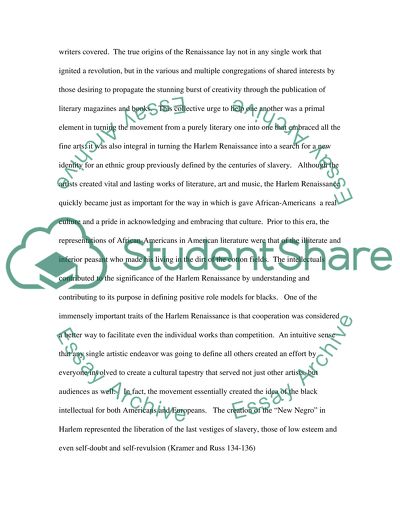Cite this document
(“The Harlem Renaissance: the Future of Artistic Expression Research Paper”, n.d.)
The Harlem Renaissance: the Future of Artistic Expression Research Paper. Retrieved from https://studentshare.org/history/1525496-the-harlem-renaissance-essay
The Harlem Renaissance: the Future of Artistic Expression Research Paper. Retrieved from https://studentshare.org/history/1525496-the-harlem-renaissance-essay
(The Harlem Renaissance: The Future of Artistic Expression Research Paper)
The Harlem Renaissance: The Future of Artistic Expression Research Paper. https://studentshare.org/history/1525496-the-harlem-renaissance-essay.
The Harlem Renaissance: The Future of Artistic Expression Research Paper. https://studentshare.org/history/1525496-the-harlem-renaissance-essay.
“The Harlem Renaissance: The Future of Artistic Expression Research Paper”, n.d. https://studentshare.org/history/1525496-the-harlem-renaissance-essay.


